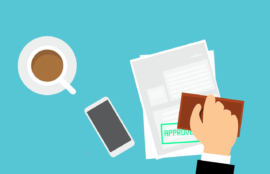What About Mortgage Pre-Approval?

If you’ve been renting or living at home and you’re now ready to buy your own place, you’ll likely want to know how much you can afford. While your finances are a significant factor, getting a mortgage pre-approval is a way to ensure you know exactly how much buying power you have.
What is a pre-approval and how does it work?
It’s a quick way to see how much a lender is willing to extend you when you’re ready to start house hunting, and it’s often recommended that your pre-approval is complete before you make an offer on a house.
During the pre-approval process, you’ll find out the following:
- The maximum amount of mortgage you qualify for
- What your estimated monthly payments will be
- What your interest rate will be
Once your mortgage pre-approval goes through, your interest rate will typically be locked in for 90-120 days. If interest rates go up during that time, you still get the promised rate. However, if rates fall, you can see if you can get a better mortgage rate when you’re ready to close.
An important detail to remember when it comes to pre-approvals is that some lenders can only hold fixed rates during the pre-approval period. Variable mortgage rates, because they’re determined by the movement of the Bank of Canada’s policy rate, can’t always be guaranteed. Pre-approvals are good for 90-120 days depending on the lender it can be up to 130 days.
Pre-qualification vs. pre-approval
What many people don’t realize is that there’s a difference between pre-qualification vs. pre-approval. Knowing how the two work could help you during your home search.
If you need a quick answer on how much you may be approved for, then a mortgage pre-qualification is what you want. Most financial institutions have an online tool where all you need to put in is your income, debt and assets. Based on that information, you’ll get an estimate of how much you’d be approved for. Pre-qualifications only take a few minutes and can be done online or over the phone.
This is where your lender will check your credit and confirm your financial information. Once approved, your lender is committing a mortgage to you at a set interest rate for a fixed period of time.
Although mortgage pre-approval is a promise from a lender, it’s not a guarantee. When you’re ready to close, the lender will do one final financial check to see if your finances have changed since the pre-approval was made. They may also appraise your home, as the property value of the home you purchased could also affect your mortgage.
How to get pre-approved for a mortgage
Since it’s free to get pre-approved, it’s a good idea to shop around.
During the process, most lenders will run a hard credit check to assess your finances, so make sure your credit score is in good shape. Multiple credit inquiries from a variety of lenders within a short period, typically 14 to 45 days, will appear as only one hard check on your credit file, so the impact on your credit score is negligible.
You can contact various mortgage lenders to find out how much you’ll be approved for and what interest rates they’re offering. Alternatively, you could seek out the assistance of a mortgage broker who will shop around on your behalf. Brokers get paid by the lender, so there’s no cost to you.
Regardless of which route you go, you’re going to need to provide the following information:
- Your identification
- Letter of employment and proof of income
- Position and length of time with your current employer
- Additional income and assets
- Outstanding debt
- Bank statements
- Down payment
- Notice of Assessment from the Canada Revenue Agency for the past two years (self-employed individuals only)
- Permission to allow the lender to obtain your credit report
Once you apply, it takes only about 24-48 hours to get an answer. With formal approval in place, you’ll know exactly how much you can afford. That said, you need to factor in additional costs such as closing costs, moving costs, ongoing maintenance and any additional saving goals that you may have.
In other words, you may not want to max out your budget on housing.
What to do if you aren’t approved
Unfortunately, not everyone gets approved. If that happens to you, there are a few things you could consider depending on the reason why you were declined.
- Lower your expectations. Lenders might approve you for a lower amount than you want.
- Check with other lenders. Other lenders may approve you, but they could charge a higher interest rate for the additional risk. Make sure you know how to choose a mortgage lender.
- Save a larger down payment. Having more money saved means you may not need to borrow as much.
- Improve your credit. Your credit score could affect your mortgage approval. Improve your credit score by paying down debt, making your payments on time and avoiding applying for new credit.
- Don’t change jobs. Steady employment is something lenders want to see.
- Get a co-signer. If your income and/or credit score are not good enough to qualify for a mortgage with a desirable rate, you could ask a parent to co-sign your application. A co-signer is responsible to make your mortgage payments if you can’t, however, so this option should not be undertaken lightly.
Having your finances in order is essential to getting a mortgage. If you’re ready to start looking for a home, get a pre-approved right away. It doesn’t hurt you in any way and it’s quick to get an answer. Once approved, you can start looking for a home that fits within your budget.






